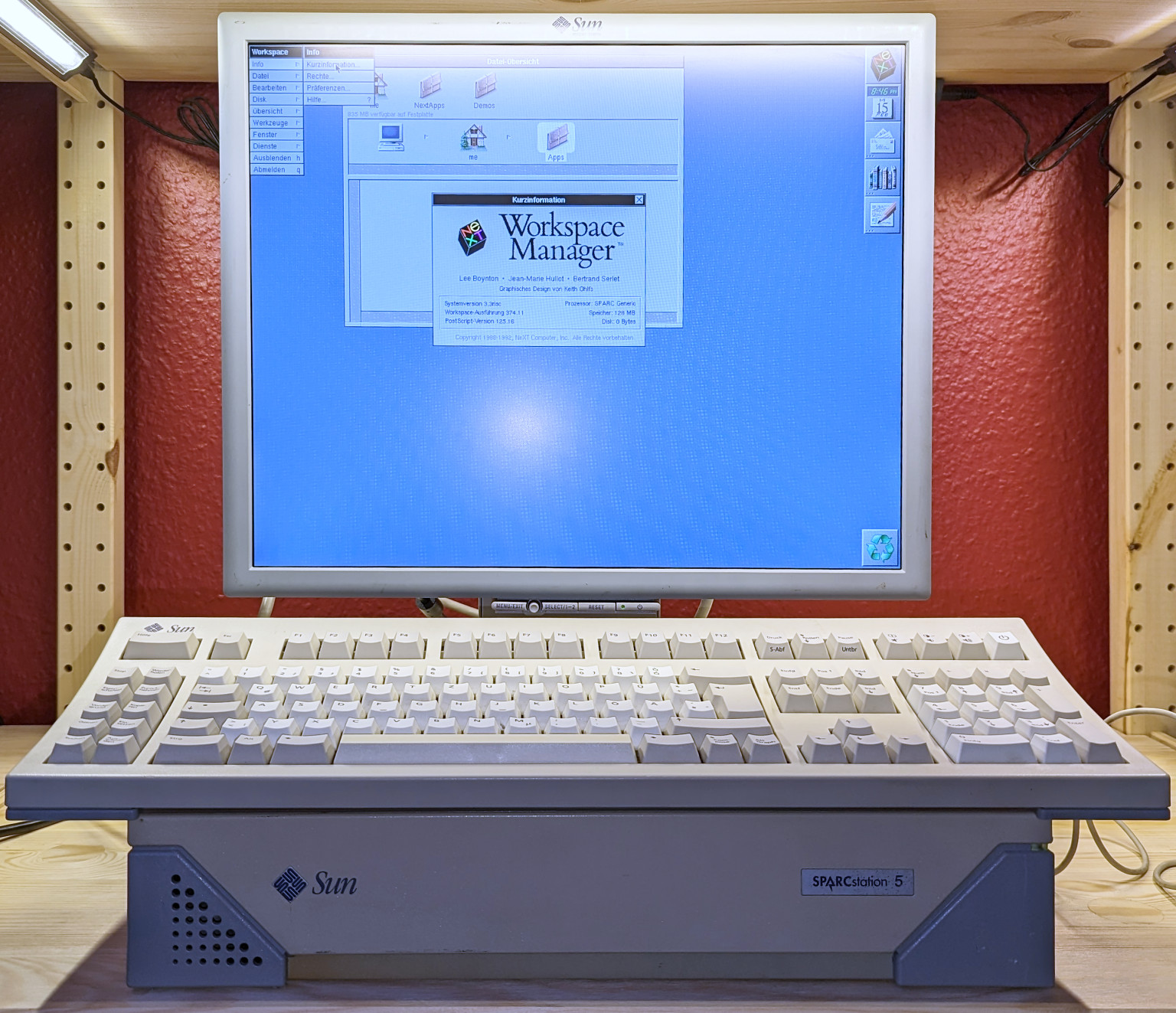SPARCstation 5
Gallery

Image of OSfOM.org Collection's SPARCstation 5 .
Technical Specifications
| Model: | SPARCstation 5 |
|---|---|
| Codename: Platform: |
Aurora sun4m |
| Processor: Math Copro: |
microSPARC-II |
| Clock Speed: | 70, 85, and 110 MHz, with a later 170 MHz TurboSPARC option |
| RAM: | |
| Graphics: | |
| Operating System: | |
| Introduced: | March 1994 (170MHz Version: 1997) |
| Dealer price (net): |
I got this SPARCstation 5 through a swap deal (sun <=> apple :)) with a fellow club member.
Done:
- Exterior and interior cleaning - the power supply was extremely dusty
- Reprogramming of the IDPROM, there was a wrong model stored, which meant that neither Solaris nor NEXTstep could be installed
- 2 circular saw Seagate 500MB HDs replaced by a 9GB IBM SCA
- Installation of NEXTstep 3.3.14 (last version for SPARC)
To-Do:
- Upgrade to the maximum possible RAM of 256 MB
The SPARCstation 5: Sun's Affordable Workhorse
The Sun Microsystems SPARCstation 5 quickly became one of Sun's most popular and enduring workstations. While the SPARCstation 10 and 20 represented the high-end of Sun's 32-bit SPARC line, the SPARCstation 5 was designed to bring capable SPARC performance to a more accessible price point.
Retaining the familiar and convenient "pizza box" form factor, the SPARCstation 5 was powered by the microSPARC-II processor, available in various clock speeds. Although not as powerful as the SuperSPARC or hyperSPARC processors found in the SS10 and SS20, the microSPARC-II offered a solid balance of performance and cost-effectiveness.
The SPARCstation 5 was highly versatile and widely adopted across a range of environments, including software development, network administration, and general office tasks in technical fields. Its affordability and reliability made it a common sight in universities, small businesses, and corporate departments throughout the mid-to-late 1990s. Key features included SBus expansion slots for adding graphics cards, network adapters, and other peripherals, and support for a reasonable amount of RAM for the time.
Sun also leveraged the SS5 platform for their "Netra" line of dedicated web servers, highlighting its suitability for network-centric tasks. The longevity and sheer number of SPARCstation 5 units sold are a testament to its success. It provided a stable and capable Unix platform for a generation of users and played a significant role in expanding the reach of the SPARC/Solaris ecosystem.
Today, the SPARCstation 5 is a beloved classic among vintage computer enthusiasts, often sought after for its iconic design, historical significance, and continued usability for retrocomputing projects.